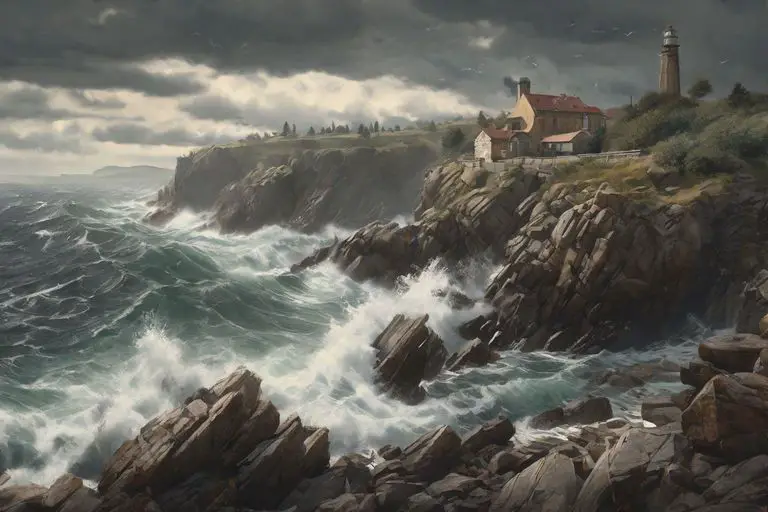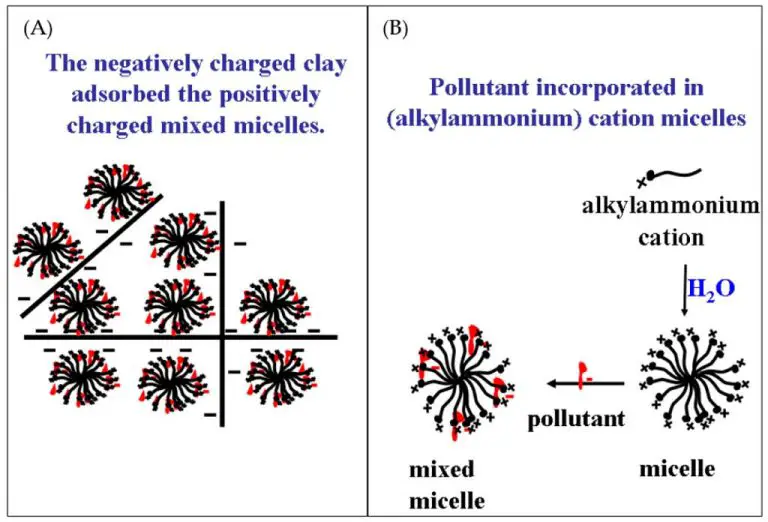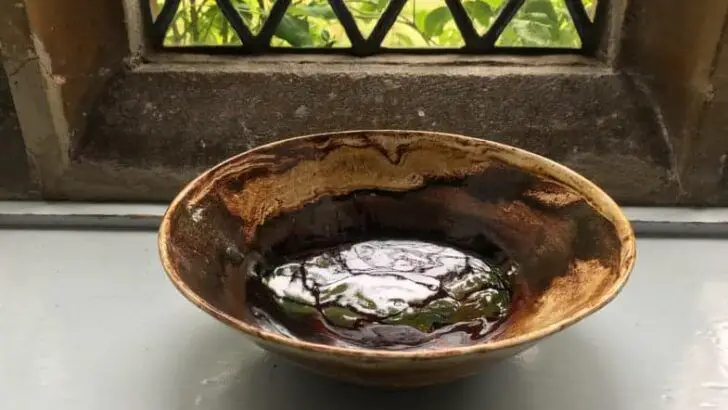How Do You Describe The Color Stormy?
Defining Stormy as a Color
Stormy is not an exact color but more of an impression or feel of a color. It evokes dark grays, deep blues, black, and muted cool tones.
According to Merriam-Webster dictionary, storm blue is defined as “a variable color averaging a grayish blue that is redder and less strong than electric, redder and duller than copenhagen, lighter, stronger, and bluer than cadet.” (Source). This helps capture the essence of stormy as a blending of grays and blues.
As CrispEdge notes, stormy is primarily a color from the blue family. It is a mixture of cyan blue color that creates an ominous, dark, and moody impression. (Source). When imagining stormy skies and seas, the color evokes a sense of brooding darkness before the storm.
Stormy’s Use in Art and Design
Stormy is often used in paintings and other artworks to depict stormy seascapes and landscapes. The dark, ominous shades of stormy gray, blue, and purple can help create a sense of gloom, menace, or foreboding in a scene. For example, J.M.W. Turner’s painting Snow Storm – Steam-Boat off a Harbour’s Mouth (1842) uses stormy grays and blues to portray a ship struggling through a swirling tempest. Other artists like Ivan Aivazovsky have commonly used stormy colors to paint stormy seascapes.

Stormy colors help set an atmospheric mood and convey the power and drama of a storm. As described in The Stormy Night – An Atmospheric Painting (https://blog.krutigandhi.com/p/the-stormy-night-an-atmospheric-painting), stormy shades of blue, purple, and gray can create realistic storm clouds and rain effects in a painting. Stormy blues and grays blended together are especially useful for painting the churning waves and waters of a stormy sea, like in Caryn Dahm’s tutorial Painting a Stormy Sky (https://www.caryndahm.com/blog/painting-a-stormy-sky). Overall, the ominous and brooding nature of stormy makes it very fitting for portraying dramatic, foreboding scenes in art.
Stormy’s Associations and Symbolism
The color stormy, with its dark, ominous tones, is commonly associated with storms, bad weather, turbulence, and trouble. Stormy shades evoke a sense of power, danger, mystery, and unpredictability [1].
In literature, writers often use storm symbolism, employing stormy colors and weather conditions to represent personal, emotional, or societal upheaval [1]. Dark stormy colors can suggest threat, menace, fear, or the presence of evil. They create an atmosphere of gloom, turmoil, tension, conflict, and unease.
Storms and stormy colors represent nature’s power and untamed force. The tumult of a storm disrupts order and routine. Stormy grays and blacks depict life’s difficulties and remind us that existence has cycles of both calm and chaos [2].
Yet stormy colors can also symbolize cleansing and renewal, washing away the old to make way for the new. They are a sign of necessary change, albeit through radical means. In many cultures, storm gods personify these dramatic forces of nature.
Stormy in Nature
In nature, the color stormy is often associated with dark, turbulent weather. Stormy skies and seas evoke a sense of brooding intensity. Storm clouds are slate gray or nearly black, seeming to portend driving rain or rattling thunder. Churning ocean waves during a storm take on a steel gray or charcoal hue as whitecaps whip across the surface. Forks of lightning may stab through thick, ominous thunderheads, flashing a burst of brilliant white against the gloom.
The darkness of an approaching storm signals a coming onslaught of wind and precipitation. As a 1935 account describes, “The inky raincloud had now risen mountain-high upon the horizon and its gray masses were sweeping upon the wings of the gale toward the sun.” (Storm). When painter J.M.W. Turner depicted an epic seascape of a steamship navigating through a storm, he used brooding gray and brown tones to convey the tumult.
Overall, stormy’s moody intensity in nature evokes a sense of awe at the building forces of wind and rain. The color perfectly captures the brooding darkness and energy that comes before the thunderstorm fully unleashes its fury.
Stormy’s Technical Specifications
Unlike solid colors, the exact technical specifications of stormy can be tricky to pin down. Stormy is not defined by an exact hex code or Pantone number since it is composed of varying mixes of colors.
Artists will often mix darker blues, grays, and blacks together on the canvas or palette to achieve the moody, cloudy effect of stormy. Combining a color like Payne’s gray with a midnight or navy blue and small amounts of black can produce a stormy shade.
Since stormy is a blend, its technical composition can change slightly based on the specific colors used and the ratios mixed. This allows artists flexibility to customize their stormy to perfectly match the desired mood and imagery.
Using Stormy in Design
The stormy color palette lends itself well to ominous, eerie, or mysterious designs. The dark grays and deep blues evoke a sense of gloom and tension. Stormy hues contrast nicely when paired with bright, warm accent colors like yellow, orange, or red. The visual interplay can create an unsettled or foreboding mood.
According to Canva’s design guide (https://www.canva.com/colors/color-palettes/stormy-weather/), stormy colors work well for edgy, avant garde designs. They give a polished yet gritty urban feel popular in fashion or print projects aiming for high contrast drama.Stormy’s muted palette also pairs nicely with black and white photography.
Interior designers suggest using stormy tones sparingly in living spaces to avoid an overwhelming gloomy effect (https://www.homesandgardens.com/interior-design/how-to-decorate-with-sherwin-williams-storm-cloud). Small accents like throw pillows or lamps work better than painting whole walls stormy colors. Combining stormy with light woods, metals, and lots of natural light keeps the mood from becoming too somber.
Stormy Fashion and Decor
Stormy grays, blues, and blacks have become popular in modern fashion and home decor. Designers often use these moody hues to create an edgy, sophisticated look. Stormy colors work well for accent walls, furniture pieces, or as a neutral backdrop that lets bolder colors pop.
On the fashion runway, stormy grays and blues make a statement in modern streetwear or elegant evening gowns. Dark stormy shades add drama and mystery for a high-fashion look. Some designers incorporate hints of metallic or iridescence to give stormy fabrics a multi-dimensional effect.
In home decor, stormy colors create an intimate, cozy atmosphere. A stormy accent wall made from dark blue or charcoal gray adds bold contrast to a room. Stormy furniture pieces like velvet sofas or wood media consoles provide a sense of solidity and elegance. The muted, moody shades allow brighter accent colors to stand out. Overall, stormy décor achieves a look that is both bold and soothing.
As described on the High Fashion Home website, their Stormy Sideboard “brings plenty of storage space to the dining room, living room or entryway, along with a super stylish sheen.” This dramatic black sideboard with gold trimmings exemplifies the use of stormy colors and textures in modern decor.
Stormy Mood and Psychology
The color stormy has powerful psychological associations that can induce feelings of melancholy, pensiveness, and trepidation. As a dark gray hue with hints of blue and purple, stormy connects to gloom, angst, and apprehension (The Psychology of Color: How Your Color Choices Impact Sales).
While warm colors like red, orange, and yellow are linked to energy and positivity, cool colors like blue often represent sadness or fear (The Psychology of Color – Six Degrees). Stormy elicits this somber mood through its muted, overcast tones. The hints of purple add introspection, while the dark gray conveys brooding.
Using stormy in design, fashion, art, or decor can arouse feelings of melancholy and trepidation in the viewer. Its connections to storms evoke tension, danger, and uncertainty. Stormy resonates with angst-filled moods and emotions like pensiveness, anguish, and loneliness. However, it also relates to depth, contemplation, and poignancy.
Cultural Connections
Stormy colors like gray and dark blue have long been associated with storm gods and goddesses in various mythologies and cultures. For example, according to www.quora.com/What-are-the-colors-associated-with-the-major-Greek-and-Roman-gods, Greek storm gods like Zeus and Poseidon were associated with gray and sea blue. Zeus frequently appeared surrounded by dark storm clouds and lightning bolts. Similarly, Native American cultures viewed the darkening gray skies preceding a thunderstorm as connected to the spiritual realm. According to www.bergerpaints.com/imaginecolours/colour-culture/colours-and-native-american-culture, the Lakota tribe believed black, blue, and gray were sacred colors representing the storm spirits and the West direction.
The lightning and thunder of a stormy sky have also carried symbolic meaning across cultures. Lightning represented sudden inspiration or divine revelation in ancient mythologies. It was seen as a creative force or destructive power wielded by the gods. Stormy grays and flickers of lightning evoked mystery, change, destruction, and transformation – themes that continue to appear symbolically in art and literature today.
Notable Examples
Stormy seas have been a popular subject for artists seeking to capture the power and drama of nature. Famous examples include Hokusai’s The Great Wave off Kanagawa, which depicts a giant wave about to crash down on boats near Mount Fuji. J.M.W. Turner’s paintings like Snow Storm – Steam-Boat off a Harbour’s Mouth portray ships struggling through violent storms at sea. Winslow Homer’s The Gulf Stream shows a lone sailor on a small boat surrounded by swirling waters. These vivid depictions of stormy seas tap into a sense of awe and terror when faced with the overwhelming power of nature.
In literature, stormy seas often represent turmoil, danger and struggles against nature. Notable examples are the storm scene in William Shakespeare’s The Tempest and the sinking of the ship in Ernest Hemingway’s The Old Man and the Sea. Stormy seas have also been depicted in films like The Perfect Storm and Life of Pi to heighten the drama and conflicts facing the characters.


